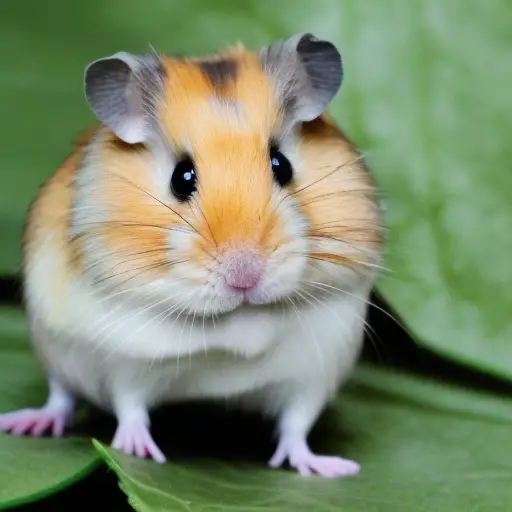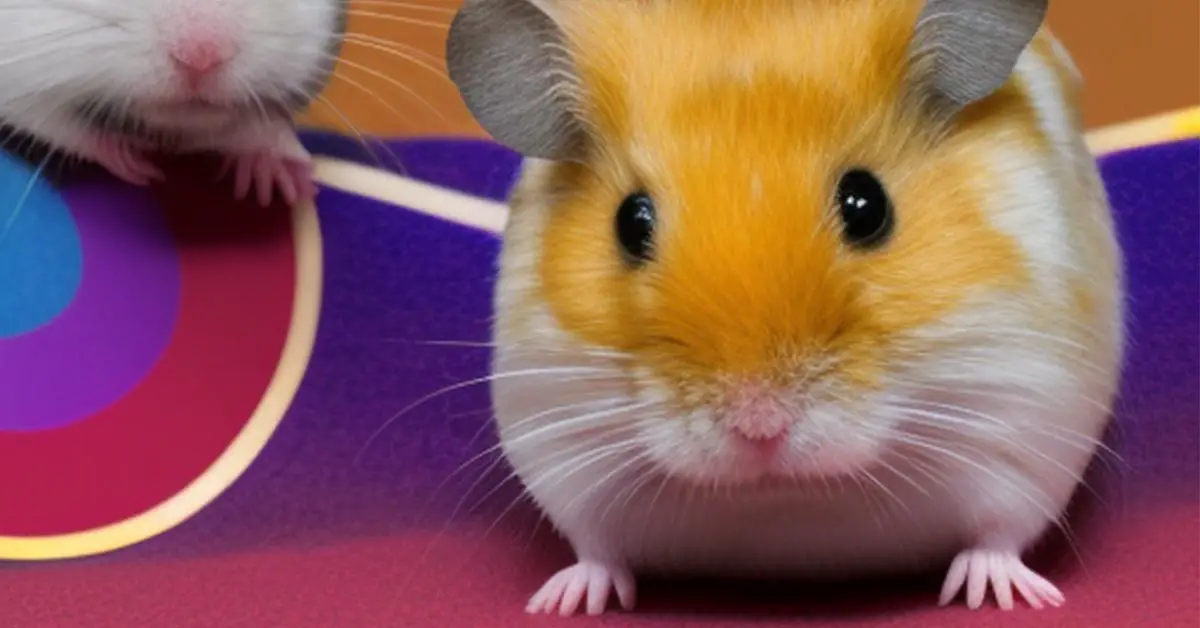Hamsters are small, adorable, and often kept as pets. These little creatures have some unique characteristics that make them interesting to study, one of which is their vision. Many people wonder if hamsters can see color, and if so, what colors do they see? In this article, we will explore the topic of hamster vision and try to answer the question of whether hamsters can see color.
Table of Contents
Can Hamsters See Color?
Hamsters belong to the rodent family, and as such, they have eyes that are located on the sides of their heads. This type of eye placement allows hamsters to have a wide field of vision, which helps them detect potential predators or threats. Hamsters also have good night vision, which is essential for their survival in the wild, as they are active during the night. However, In regards to hamster color vision, their ability to see color is not as well developed as that of humans or some other animals.

Color Vision
To understand whether hamsters can see color, it is important to first understand how color vision works in humans and other animals. Color vision is made possible by the presence of special cells in the retina called cones. These cones contain light-sensitive pigments that respond to different wavelengths of light, allowing us to perceive different colors. Humans have three types of cones, which respond to red, green, and blue light, respectively. This combination of cones allows us to see a wide range of colors, including many shades of red, green, blue, yellow, and others.
UV and Blue Light
However, it is important to note that hamsters can still see a wide range of colors, just not in the same way that humans do. For example, they can see blue light, which is often perceived as a bright, clear color by humans. This blue light is important for hamsters as it helps them navigate their environment and find food. They also have the ability to see UV light, which is not visible to humans. UV light is important for hamsters because it helps them find food sources that are rich in UV-reflecting compounds, such as flowers and certain types of fruits.
Contrast Sensitivity
Hamsters also have good contrast sensitivity, which means that they can see differences in brightness and shade even if they cannot see different colors. This ability helps them see objects and obstacles in their environment, and also helps them find food and water.
How Does Hamster Color Vision Compare To Other Small Rodents Like Mice and Gerbils?
Hamster color vision is similar to that of other small rodents like mice and gerbils, as they also have limited color vision. Like hamsters, mice and gerbils have two types of cones in their eyes that respond to ultraviolet (UV) and blue light. This means that they are also able to see blue light and UV light but not red, green, or yellow light.
It’s worth noting that the exact nature of color vision can vary between species and individual animals, so there may be some differences in the specific details of color vision between hamsters, mice, and gerbils. However, in general, these small rodents have limited color vision that is similar to that of hamsters.
Does the Age of a Hamster Affect Their Color Vision?
The age of a hamster can affect their vision, including their color vision, as they age. Just like with humans and other animals, the eyesight of hamsters can decline with age, which can impact their ability to see color. As hamsters age, the cells in their eyes, including the cones that are responsible for color vision, can deteriorate, leading to decreased visual acuity and potential vision loss.
Additionally, other age-related conditions such as cataracts and glaucoma can also impact a hamster’s ability to see color. These conditions can cause a buildup of fluid in the eye, leading to clouding of the lens and decreased vision.
In conclusion, while hamsters have limited color vision throughout their lives, their color vision can deteriorate with age, potentially affecting their ability to see color. It’s important to monitor a hamster’s vision and provide them with proper care as they age to help maintain their eyesight and quality of life.
In conclusion, hamsters can see color, but their color vision is limited compared to humans. They can distinguish between UV light and blue light, and they have good contrast sensitivity, which helps them navigate their environment and find food. This unique vision system allows hamsters to see the world in their own way and helps them survive in their natural habitat. So, while they may not be able to see the world in the same way that humans do, they are still able to see it in a way that is uniquely their own.
Frequently Asked Questions (FAQs) About Hamster Color Vision
Q: Can hamsters see color?
A: Yes, hamsters can see color, but their color vision is limited compared to humans. They have two types of cones in their eyes that respond to ultraviolet (UV) and blue light, which means that they can see blue light and UV light but not red, green, or yellow light.
Q: How does hamster color vision work?
A: Hamsters have special cells in their retinas called cones that contain light-sensitive pigments that respond to different wavelengths of light. Hamsters have two types of cones that respond to UV and blue light, which allows them to see these colors but not red, green, or yellow light.
Q: How does hamster color vision differ from human color vision?
A: Humans have three types of cones that respond to red, green, and blue light, which allows us to see a wide range of colors including many shades of red, green, blue, yellow, and others. Hamsters, on the other hand, have two types of cones that respond to UV and blue light, which means that their color vision is more limited.
Q: Do hamsters have good contrast sensitivity?
A: Yes, hamsters have good contrast sensitivity, which means that they can see differences in brightness and shade even if they cannot see different colors. This helps them see objects and obstacles in their environment and find food and water.
Q: How does hamster color vision help them in their environment?
A: Hamsters use their ability to see blue light to navigate their environment and find food. They also use their ability to see UV light to find food sources that are rich in UV-reflecting compounds, such as flowers and certain types of fruits. Good contrast sensitivity helps them see obstacles and other objects in their environment.
Q: Can hamsters see the world the same way humans do?
A: No, hamsters cannot see the world the same way that humans do. Their color vision is limited, and they see the world differently due to their unique vision system. However, they are still able to see the world in a way that is uniquely their own and helps them survive in their natural habitat

